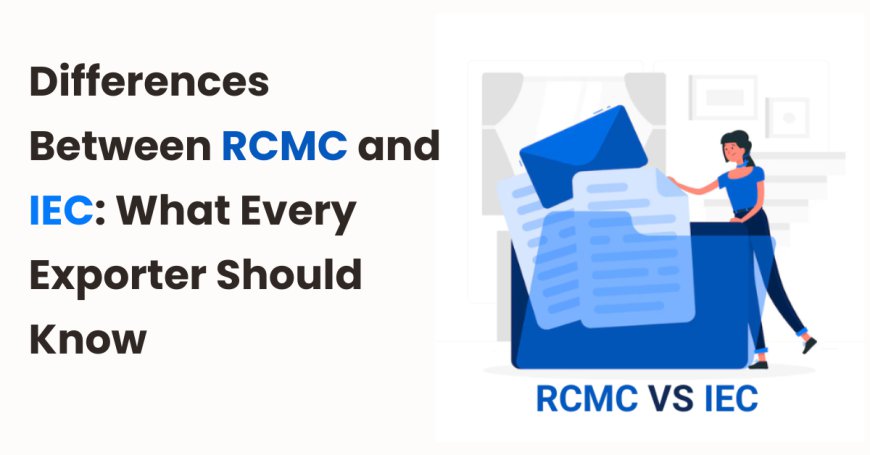Differences Between RCMC and IEC: What Every Exporter Should Know

When it comes to exporting goods from India, two essential registrations play a pivotal role in ensuring the smooth functioning of international trade: RCMC Registration (Registration-cum-Membership Certificate) and IEC (Import Export Code). Although both are crucial for exporters, they serve different purposes and are governed by separate authorities. In this article, we will explore the key differences between RCMC and IEC, helping exporters understand their significance.
What is RCMC Registration?
Overview of RCMC
RCMC stands for Registration-cum-Membership Certificate, which is issued by various Export Promotion Councils (EPCs) in India. This certificate is mandatory for exporters to avail benefits under foreign trade policies. RCMC Registration allows exporters to be recognized by the Government of India and the respective EPCs.
Importance of RCMC for Exporters
-
Trade Facilitation: RCMC registration is required for obtaining export-related incentives, duty exemptions, and other trade benefits.
-
EPC Membership: It grants membership to the concerned Export Promotion Council, offering additional resources and guidance for international trade.
-
Financial Assistance: Exporters with RCMC registration can access financial assistance, including export credit and insurance schemes.
How to Obtain RCMC Registration?
Exporters must apply to the relevant Export Promotion Council depending on the goods they wish to export. For instance, an exporter of agricultural products will need to obtain APEDA Registration (Agricultural and Processed Food Products Export Development Authority) for RCMC.
What is IEC?
Overview of IEC
IEC stands for Import Export Code, which is issued by the Directorate General of Foreign Trade (DGFT). It is a unique code that permits an entity to carry out imports and exports in India. Without an IEC, businesses cannot engage in international trade or deal with customs clearance and shipments.
Importance of IEC for Exporters
-
Required for International Trade: IEC is mandatory for all businesses wishing to import or export goods from India.
-
Customs Clearance: It facilitates smooth customs clearance and documentation for export shipments.
-
Bank Transactions: Banks require IEC for processing foreign remittances related to export transactions.
How to Obtain IEC?
Obtaining an IEC involves registering with DGFT through their online portal. The process requires providing details such as the business structure, the nature of trade, and necessary documents.
Key Differences Between RCMC and IEC
1. Purpose and Functionality
-
RCMC Registration: Primarily helps exporters avail themselves of benefits under India’s Foreign Trade Policy. It is sector-specific and linked to Export Promotion Councils.
-
IEC: Enables businesses to legally engage in international trade, acting as a registration requirement for import and export activities.
2. Issuing Authority
-
RCMC Registration: Issued by the respective Export Promotion Council, such as APEDA for agricultural exporters.
-
IEC: Issued by the Directorate General of Foreign Trade (DGFT), a government agency.
3. Scope of Applicability
-
RCMC Registration: Only required for exporters to avail themselves of specific benefits and incentives, depending on the product category.
-
IEC: A general requirement for all businesses involved in international trade, regardless of the type of goods.
4. Renewal Requirement
-
RCMC Registration: Must be renewed periodically, depending on the rules of the Export Promotion Council.
-
IEC: Does not require periodic renewal unless there is a change in business details.
Conclusion
Both RCMC Registration and IEC are integral for exporters in India, each fulfilling distinct roles. While the IEC is a basic necessity for conducting international trade, RCMC offers access to specialized benefits and resources, particularly linked to specific export sectors. Understanding these differences will help exporters comply with trade regulations and make the most of available incentives for a successful global presence.
Also Read: Exploring the Benefits of APRA Registration
